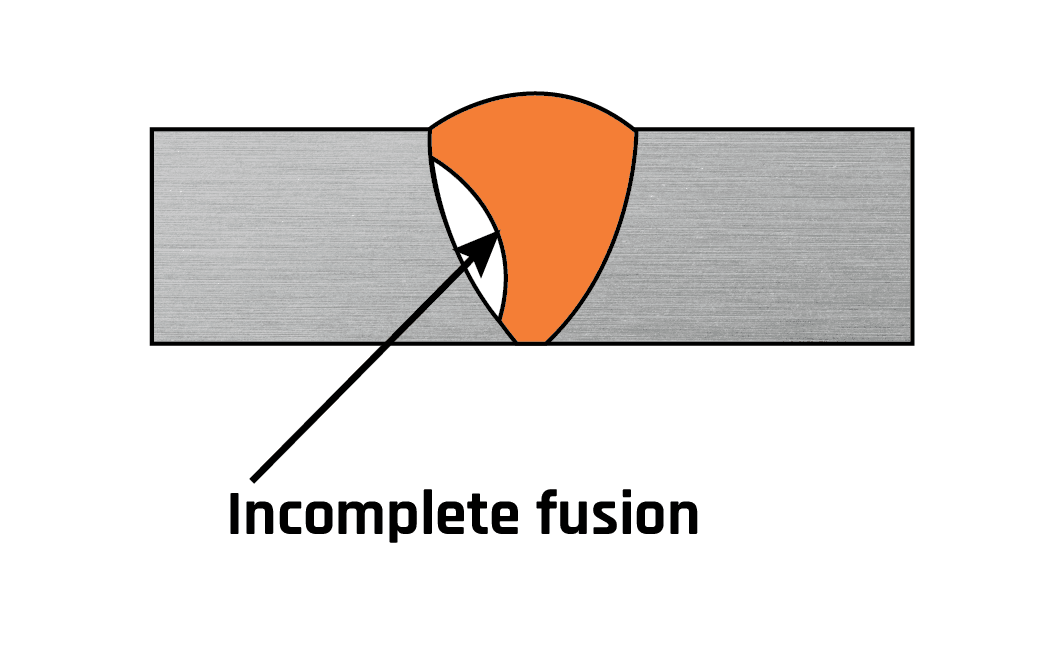Finest Practices for Preventing Weld Undercut: Understanding the Essentials
Recognizing the Causes and Solutions for Undercut Welding in Steel Manufacture Processes
In the world of steel manufacture procedures, the event of undercut welding postures a significant difficulty that requires a detailed understanding of its reasons and feasible options. The complex interaction of different elements during welding operations can cause this unwanted sensation, affecting the structural integrity and total top quality of the bonded joints - Preventing weld undercut. By exploring the source of undercut welding and checking out efficient remedial actions, makers can boost the standard of their workmanship and ensure the manufacturing of perfect metal elements
Typical Root Causes Of Undercut Welding
Frequently overlooked in metal fabrication, undercut welding happens as a result of numerous factors that demand careful interest and know-how to be successfully reduced. One usual root cause of undercut welding is excessive warmth input. When the warm input is too expensive, it can result in the melting and succeeding erosion of the base product along the edges of the weld joint, creating a groove or undercut. Furthermore, improper welding strategies, such as using the incorrect welding angle or travel rate, can likewise contribute to undercut development. Insufficient securing gas protection is an additional essential variable that can cause damaging. Inadequate gas insurance coverage stops working to shield the weld pool properly, causing oxidation and undercut defects. The option of welding criteria, such as voltage, current, and cable feed rate, plays a significant duty in the occurrence of undercut welding. Comprehending these typical reasons is essential for carrying out safety nets and making sure high-quality welds in metal manufacture processes.
Influence of Incorrect Welding Parameters
Inaccurate welding specifications can significantly jeopardize the honesty and quality of welded joints in metal construction procedures. The influence of incorrect welding specifications materializes in various methods, leading to architectural weak points and defects in the welded components. Careful interest to welding criteria is paramount to ensure the production of top quality welds with the wanted mechanical properties and structural integrity.
Effect of Improper Torch Angle
Improper torch angle in welding operations can considerably affect the high quality and integrity of the last weld joints in metal fabrication processes. The torch angle plays a vital duty in establishing the warmth input and circulation throughout welding. When the lantern angle is incorrect, issues such as damaging can emerge. Damaging is a typical welding flaw where a groove develops along the weld toe, compromising the joint and jeopardizing its structural integrity.
A torch angle that is too steep can bring about not enough penetration, insufficient blend, and boosted spatter. On the other hand, a lantern angle that is also shallow can lead to extreme penetration, burn-through, and distortion of the base product. Preventing weld undercut. Appropriate lantern angle is necessary for making sure consistent weld top quality, stamina, and appearance
To stop damaging and other issues triggered by improper lantern angles, like this welders have to be educated to maintain the right torch angle throughout the welding procedure. Routine surveillance and modification of torch angles throughout welding can help accomplish audio welds with very little defects.
Duty of Inadequate Welding Methods

One more element of insufficient welding methods is incorrect weld preparation. Poor cleansing of the base steels, wrong joint style, or inadequate edge preparation can all contribute to damage welding. Inadequate shielding gas insurance coverage or utilizing the wrong type of gas can result in insufficient combination and the formation of undercut defects.
To address the duty of insufficient welding techniques in steel manufacture processes, it is important to provide thorough training for welders. Appropriate education on welding criteria, joint prep work, and shielding gas choice page can help protect against undercut welding and ensure high-grade welds in steel fabrication tasks.
Effective Solutions for Undercut Welding
Addressing undercut welding in steel fabrication needs implementing reliable remedies to improve weld quality and architectural integrity. Among the primary options to combat undercut is to change welding parameters such as voltage, present, and take a trip speed to make certain proper warmth input and combination. By fine-tuning these setups, welders can avoid too much melting of the base metal and filler material, lowering the possibility of undercut development.
Additionally, appropriate joint prep work is essential in stopping undercut. Ensuring tidy base steel surfaces complimentary of impurities and using the proper bevel angle can aid promote much better weld infiltration and lower the risk of undercut - Preventing weld undercut. Utilizing appropriate welding strategies, such as weaving or oscillating the lantern, can additionally assist check my site in dispersing heat evenly and filling up the weld joint adequately, reducing the opportunity of undercut issues
Furthermore, selecting the appropriate welding consumables, including electrodes and filler metals, is crucial in minimizing undercut. Utilizing materials with proper chemical structures and mechanical properties can add to accomplishing audio welds with very little undercut. Routine assessment and quality assurance actions need to additionally be applied to identify and address undercut concerns promptly, ensuring the total honesty of made steel components.

Conclusion
In conclusion, recognizing the reasons and options for undercut welding in metal fabrication processes is crucial for attaining high-grade welds. By resolving usual causes such as incorrect welding specifications, incorrect torch angle, and poor welding strategies, welders can stop undercutting and ensure solid, resilient welds. It is necessary to focus on these variables and carry out efficient solutions to improve the total welding procedure and end product high quality.
